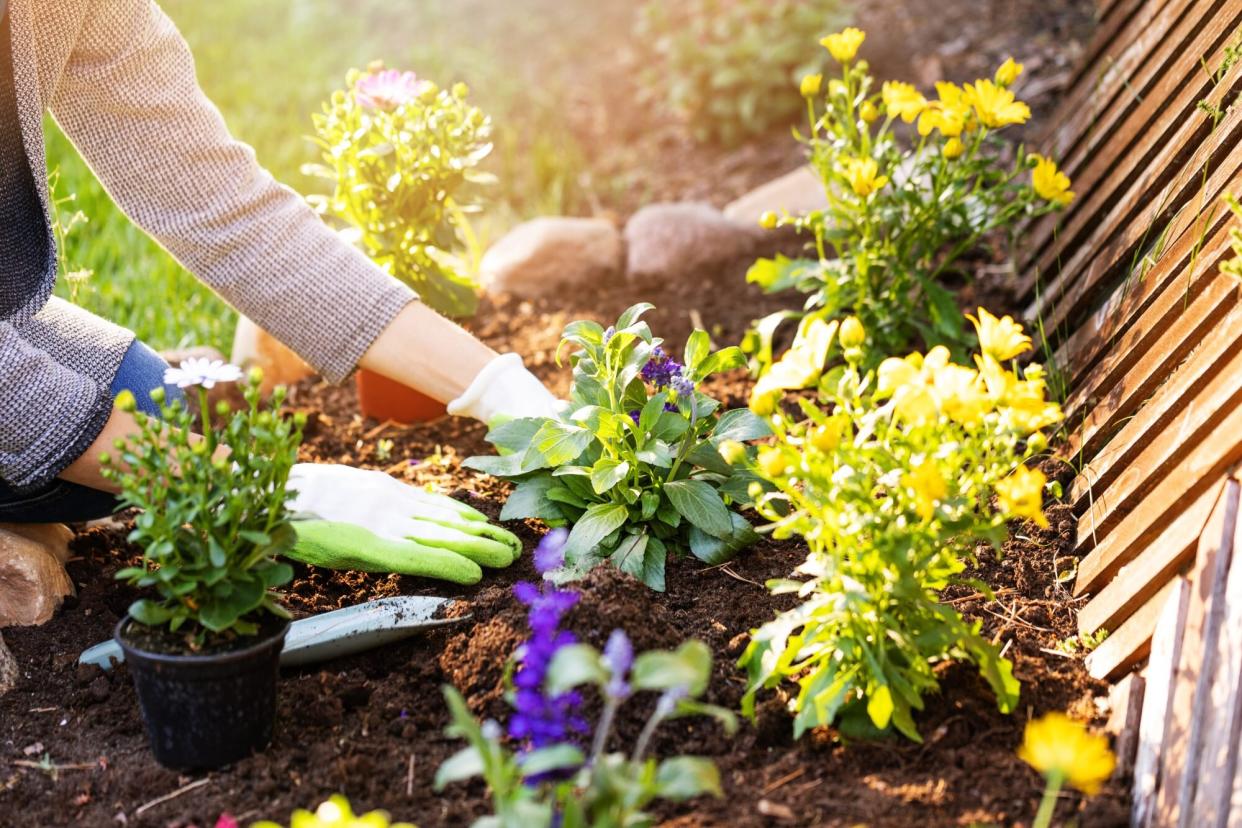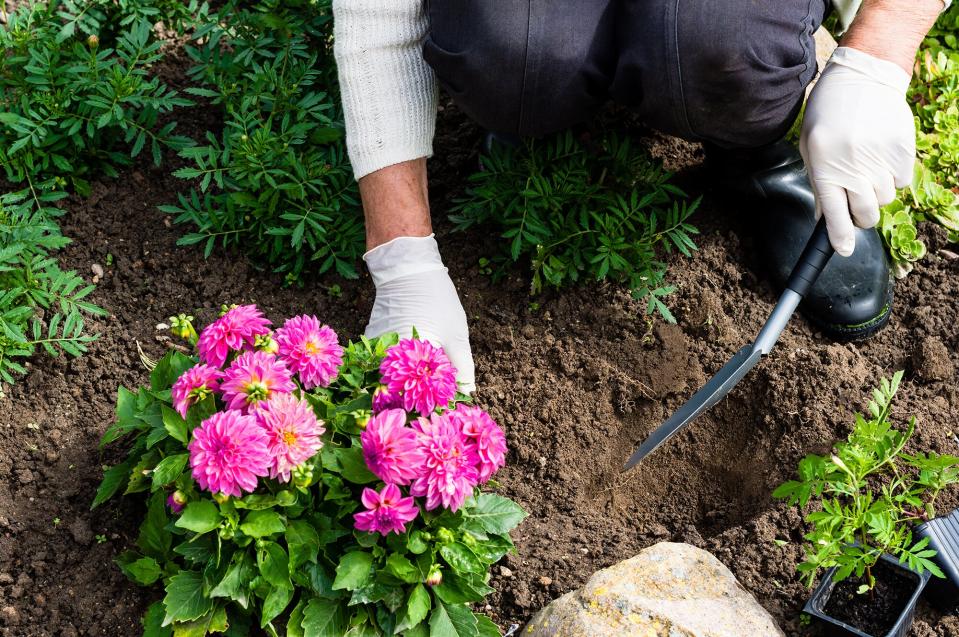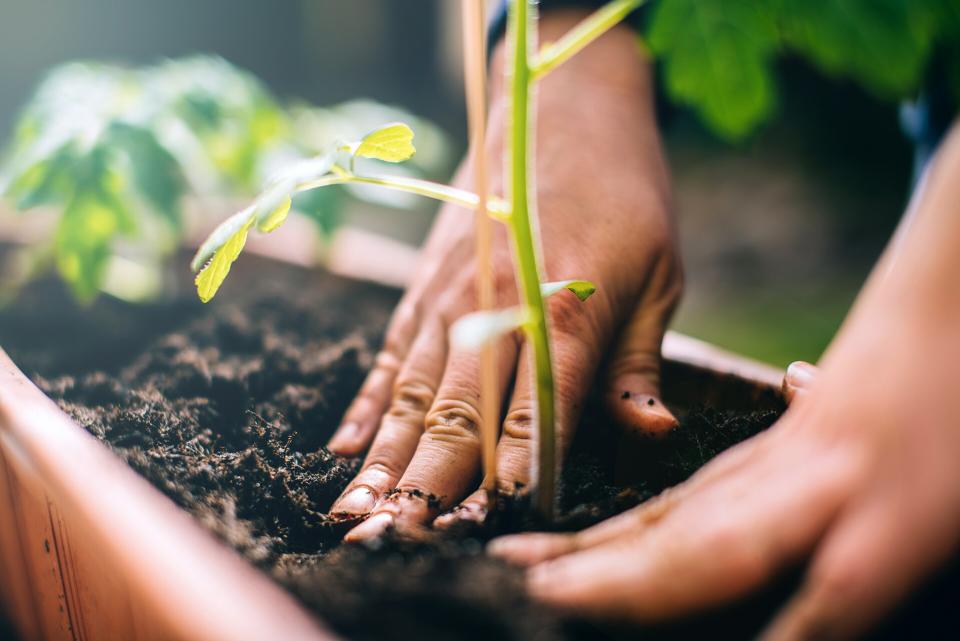How to Identify Your Soil Type—Plus, the Best Flower and Plant Varieties to Grow in Each

Getty Images
TABLE OF CONTENTS
On This Page
Understanding Your Local Soil
Testing Your Soil
Every Soil Type, Explained
How to Amend Soil
Depending on where you live, you're likely to have one of six different types of soil: loam, clay, sandy, silty, chalk, or peat. Knowing which type of soil you have in your yard is important—and will help you create a lush, self-sustaining garden, pick the right plants, and trouble-shoot any issues. Fortunately, there are several easy ways to figure out what you're working with.
Related: The Best Soil Type for Growing Succulents and Cacti
Get to Know Your Local Soil
To find out what type of soil you have, you may not have to look too much further than your own neighborhood. Most soils in a particular region are similar, says John Clements, the director of gardens at San Diego Botanic Garden. "There are great resources to assist with discovering your soil type and other garden questions: local garden clubs, county agricultural agents, agricultural and horticultural departments of local colleges, or regional Facebook gardening groups," he says.
Don't rule out your neighbors, either: "Wherever you live, other gardeners have experience with soil in the area. Chances are that a neighboring gardener can be an invaluable resource," Clements says.
Test Your Soil
If you haven't yet found a community of fellow gardeners, there are some home testing options you can use, says Ana Maria Torres, a landscape architect and the founder of at architects.
DIY Soil Test
"You can do a settle test by adding a cup of soil to a big glass jar; shake it well and leave it alone overnight," Torres says. The next morning, observe state of the water to determine what type of soil you have:
Silty and clay soils: cloudy water
Sandy soils: clear water
Peat soils: particles floating on top of water
Chalky soils: gray water and lightly colored, gritty fragments at bottom of glass
Loamy soils: clear water with fine particles floating on top
pH Soil Test
If you want to be more technical, you can use a pH test kit to determine the level of your soil's acidity and match the result against each respective soil type's pH level, says Torres.

Jurgute / Getty Images
Every Soil Type, Explained
Clay Soil
This type of soil contains at least 25 percent clay and is particularly good at holding nutrients due to the microscopic structure of each clay particle, explains Anton Ledin, the in-house plant expert for the Planta app. "Depending on how clay soils have been treated, they can either be compacted, drain slowly, and be heavy to work with—or they might have a good porous aggregate structure that allows draining and is a great environment for roots to establish in," he says.
You might experience compaction from something heavy (like a vehicle) resting on top of clay soil. "Vehicles do the worst harm and press out all the air pockets, leaving only solid clay," he says. "The best ways to improve compacted soils are to either cultivate it in fall (in areas with frost)—the freezing temperatures will break up the soil into smaller aggregates—or to promote biological activity by adding composting plant material."
Identifying Clay Soil
To confirm you have clay soil, try the "squeeze test" using a damp sample of the dirt, says Clements. He recommends holding it in your hand and squeezing it gently. "Soil that is sticky and holds tightly together and can be rolled is clay," he says, noting that ground cover can be particularly important if you have this soil type. "Covering clay soil makes it less prone to the extremes of expansion and contraction and prevents the sun from baking the clay into hard and impenetrable 'pottery.'"
Plants to Grow in Clay Soil
If you're looking for flora that will flourish in this type of soil, try a few of Ledin's suggestions:
Roses
Potatoes
Most vegetables
Daylilies
Hostas
Heart-leaved bergenia
Lilac
Coneflowers
Sandy Soil
There are a handful of states, like Florida and Texas, that are more likely to see soil made up of sandy substrate. This type of soil is quick to drain; it also warms up fast in the spring and cools quickly in the fall, says Ledin. "Compared to other soil types, it's not good at holding nutrients or water," he says. "This means it will drain and dry faster—which can be useful when growing certain plants."
Plants that are more sensitive to wet conditions (especially in the winter months) perform better in sandy verse clay soil, but anything that prefers wet conditions will not grow well in yards with this dirt type.
Identifying Sandy Soil
Check your soil to see how it fares when you squeeze a clump of it in your hand. "Gritty soil that will not hold together and falls through your fingers is sandy," says Clements. "Sandy soil has few nutrients and doesn't hold moisture well. Organic material helps the sand hold moisture and increases fertility."
Plants to Grow in Sandy Soil
If you're working with sandy soil, try planting these varieties, says Ledin:
Vegetables like carrots, beets, parsnips, potatoes, onion, and garlic
Alpine perennial plants
Succulents
Cacti
Silty Soil
People with silty soil have the best of both worlds; it's a fertile soil that is both well-draining and water retentive. "It contains mostly intermediate sized mineral particles that can either result in a porous or compact soil depending on the other components," Ledin says. "This soil type often washes away more easily than others from rain and water, so it's best to plant ground covering perennials in spots where the soil is exposed to avoid erosion."
Identifying Silty Soil
Verify your soil type with Clements' squeeze test. "Very fine soil particles with a soapy, almost water-repelling feel are silty," he says, adding that you can improve it with the addition of compost and mulch. "Covering the soil also helps prevent the fine dust of silty soil from just blowing away."
Plants to Grow in Silty Soil
Plants that like to be evenly wet and dry will thrive in silty soil, says Ledin:
Decorative perennial and annual grasses
Trees and shrubs, especially ones that prefer moist soils like willows and dogwoods
A number of tuberous and bulbous plants

Getty / Guido Mieth
Loamy Soil
This soil type is a combination of the previously mentioned iterations: clay, sand, and silt. "It's usually divided into sandy or clay loam depending on what it contains most of," says Ledin. "This is very easy to work with and gives you the perks of both clay and sandy soils—but less of the drawbacks from both."
Identifying Loamy Soil
"Loamy soil will hold its shape slightly, but [then] easily fall apart," Clements says. "In loamy soil, compost and mulch make all soil more fertile and improve moisture retention."
Plants to Grow in Loamy Soil
The good news is that most garden plants will grow well in loamy soil, says Ledin—particularly vegetable gardens and both perennial and annual flowers.
Peat Soil
Most people won't end up finding peat in their garden; it's rare and not naturally occurring, says Ledin. "Peat is porous and excellent at holding water and nutrients. Almost all soil sold in bags meant for gardens and indoor growing are peat based with very small portions of the mixes being other components," he continues. "Peat soil is almost pure organic matter and will over time decompose and shrink in volume."
Plants to Grow in Peat Soil
Since this is the type of generic soil sold at most nurseries and garden centers, most plants do well in it, says Ledin—however there are some that will flourish, like all ericaceous plants (think rhododendrons, azaleas, and camellias). The reason? Peat is lower in pH as long as lime hasn't been added to it.
Chalky Soil
Sometimes described as lime-rich, chalky soil is an alkaline dirt type that can be either light or heavy in structure depending on its components. "It's difficult to lower the pH of an alkaline soil; it won't be possible to grow ericaceous plants," Ledin says. "Chalky soil is defined by a pH over 7 and can therefore consist of different particle sizes, but usually tends to be connected to clay rich soil types."
Identifying Chalky Soil
You can do a variation on the squeeze test with some vinegar if you think you have chalky soil. "Chunkier, chalky-looking soils that froth when put in a jar of vinegar are chalky," Clements says. "In highly alkaline chalky soil, organic material helps with moisture retention and lowering the pH."
Plants to Grow in Chalky Soil
Per Ledin, there are a number of plants that will do well in this type of soil:
Vegetables, like asparagus, cabbage, broccoli, kale, cauliflower, Brussels sprouts, garlic, peas, beans, beets, and pumpkins
Carnations
Geraniums
Lavenders
Irises
Larkspurs
Houseleeks
Clematis
Kiwis
Forsythias
Lilacs
Ginkgos
Decorative flowering cherries
Related: 26 Great Ideas for Your Garden That Will Completely Transform Your Landscape
How to Improve or Amend Your Soil
According to all of our experts, the secret to improving your soil is the same no matter what type you have. "All soil types benefit from the addition of organic material. Really excellent soil is 60 percent inert material (whether loam, sand, clay, silt, or chalk) and 40 percent organic material for optimal growth," Clements says. "Add a well broken down compost frequently." Peat soil is the exception to this: It's already perfect as is, says Clements.
But don't be too quick to make adjustments. Adjust what you're planting (native plants that thrive in your particular soil type will perform best long-term) before you tweak what you already have, says Torres.
Changing the pH of Your Soil
If you're dedicated to amending your soil, pay attention to pH. "Some plants prefer acid soil and others alkaline," Torres says. "Once you've decided what you want to grow and where, you can raise the pH, making the soil more alkaline, by adding lime; adding aluminum sulfate will make soil more acidic."
Compost and Greensand
Adding bulky organic matter, such as plain, old compost, will best support clay and chalky soils, which are the most difficult to grow in, explains Torres. As for clay and sandy? "A substance called greensand can be added to[these] soils to loosen or bind them as needed," she says.

